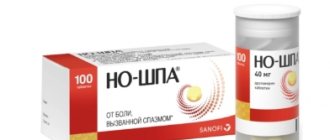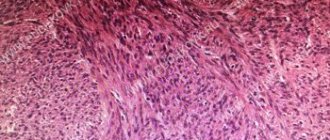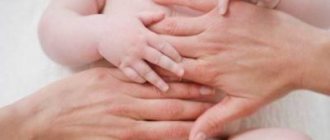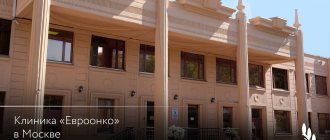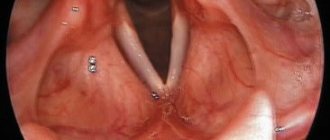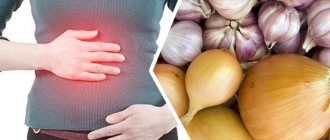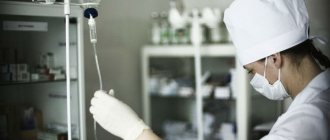The occurrence of such hernias is due to the peculiarities of the anatomical structure of the anterior abdominal wall. The main support that supports the shape of the abdominal wall is made up of a muscular frame, which is located in several layers. The muscular layer is lined with a connective tissue membrane that supports the anterior wall of the abdomen and forms fascia, which provides connection with the muscular layer, as well as covering areas not protected by the muscular layer.
The anatomy of the abdominal structure is such that all its muscles are topographically located symmetrically to the left and right relative to the midline, which itself is not covered by the muscular component. The fascia covering the right and left rectus abdominis muscles not only connects them to each other, but also strengthens the abdominal wall as a whole, acting as a frame. This fascia is white in color, which is why the midline is also called the “linea alba.” The width of this line varies throughout its entire length and is not the same in different sections: above the umbilical ring it is always wider - from 1 to 3 centimeters, below the level of the umbilical ring it narrows from several millimeters to 1 centimeter. Due to its specific structure, the white line of the abdomen is more susceptible to herniation slightly above the navel.
General information
A postoperative (ventral) hernia is a defect on the anterior abdominal wall, accompanied by displacement (exit) of organs into the hernial sac, formed at the site of a postoperative scar after a previous surgical intervention on the abdominal organs.
A ventral hernia forms during the postoperative period (most often within a year after surgery). A ventral hernia consists of the hernial orifice (a defect in the muscles of the abdominal wall), the hernial sac (a stretched part of the peritoneum) and the hernial contents - part of the organ/organ located in the hernial sac.
The defect manifests itself when the abdomen is tense and disappears completely in the supine position.
Ventral hernias are a common surgical pathology. According to various authors, postoperative ventral hernia (POVH) occurs in 4-15% of patients who have undergone laparotomy . Most often occur after emergency surgical interventions (after urgent removal of the gallbladder, cesarean section). According to localization, postoperative hernias can form in various parts of the anterior/lateral abdominal wall, however, hernias of median localization predominate in the structure of ventral hernias. Due to the special mechanism of occurrence of inguinal postoperative hernia, its occurrence is much lower. ICD-10 code for postoperative ventral hernia: K43.0.
In practice, any operations on the abdominal cavity can be complicated by postoperative hernias, but most often postoperative hernias are formed after removal of the gallbladder, intestinal obstruction , perforated gastric ulcer , peritonitis , appendicitis , hernia of the white line of the abdomen/umbilical hernia, uterine fibroids , ovarian cysts , after caesarean section , penetrating abdominal wounds. Normally, the formation of a postoperative scar occurs within 2.5-3 months, and its final organization is completed after 12 months.
The tendency towards an increase in the formation of ventral hernias of the anterior abdominal wall (umbilical, periumbilical, hernias of the white line of the abdomen) directly correlates with the age of the patient. Ventral hernia in old age is most often caused by fatty degeneration/atrophy of the abdominal muscle tissue, the presence of multiple organ pathologies, decreased elasticity of the fascia/thinning of the aponeuroses , partial hypotension , and an increase in the size/number of “weak spots” in the tissues of the anterior abdominal wall.
In addition to the accelerated development of involutional processes in the muscle/connective tissue structures of the abdominal wall and the slowdown in the intensity of reparative processes in patients of advanced age (over 60 years) and senile age (over 75 years), there are other risk factors: chronic respiratory failure, difficulty urinating, constipation , abdominal aortic aneurysm . Postoperative ventral hernias in patients over 60 years of age often lead to disability, and when they are complicated, to death.
In general, the presence of a ventral hernia and the lack of adequate treatment is accompanied by a high risk of complications: strangulation of internal organs, inflammation of the hernial contents, and the development of life-threatening acute peritonitis .
Exercise therapy for herniated cervical spine
Why is therapeutic exercise so important for cervical hernias? The fact is that a feature of the intervertebral discs of an adult is the lack of blood supply. Nutrition to their tissues comes osmotically from the environment. But in order for the nutrient fluid necessary for metabolism in cartilage tissue to appear in the environment, muscles must work.
Only muscle work can maintain the discs in normal condition. With a sedentary lifestyle, and if you are still overweight, the discs are quickly destroyed. Exercise therapy also helps strengthen the muscles that support the spine, improves blood circulation and blood flow to the muscles, brain and spinal cord.
Therefore, complexes of therapeutic exercises are included in the treatment program immediately after pain relief. A set of exercises is selected by a physical therapy doctor and performed under the supervision of an instructor
Exercises for morning exercises
Together with an instructor, you can select a number of exercises for daily morning exercises, perform them under his supervision, and then continue exercising at home. Here are some exercises:
- lie on your back, relax and begin to clench and unclench your fists with force; do 20 times, relax, count to 20 and repeat;
- sit on a chair, hang your arms down and rotate your shoulders first in one direction, then in the other; perform 5 – 10 times; if difficult, 2 – 3 times;
- sit on a chair, back straight, arms hanging down; raise your arms first to the sides, then, without stopping, up, and then lower them in the reverse order; repeat 3 times.
By doing morning exercises, you can gradually increase the number of exercises performed and the number of approaches.
If pain occurs during the exercise, exercise should be stopped immediately. The next day it can be performed only if there is no pain and the load has been reduced.
Pathogenesis
The pathogenesis of the development of a postoperative hernia involves changes in the structural organization of the aponeurosis . Characteristic is remodeling of connective/muscular tissue caused by dystrophic/restorative processes. Recovery processes are considered as replacement compensatory processes in response to the death of part of the aponeurosis tissue. The trophic function of the aponeurosis is significantly reduced, which is due to a reduction in the microvasculature, which contributes to destructive trophic changes in the connective tissue. As a result of a metabolic disorder in the connective tissue, the aponeurosis becomes thinner, the collagen bundles become unfibered, and spaces filled with adipose tissue are formed between its fibers. The ratio of collagen types I and III decreases. The architecture of the scar has multidirectional elastic/collagen fibers running in different planes, forming a structure of unformed dense connective tissue. This significantly reduces the strength of the anterior abdominal wall and its adaptation to mechanical loads, promoting the formation of hernias .
Classification
Ventral hernias are characterized by a variety of locations, sizes, and shapes, which makes it difficult to create a single classification. According to the characteristic features, there are:
- By size of hernia: small, medium, extensive, giant.
- By localization: lower/upper middle and lower/upper right-sided/left-sided lateral.
- According to the presence of complications: uncomplicated hernia; strangulated hernia; perforating hernia with signs of intestinal obstruction .
According to the composition of the hernial sac: greater omentum, loops of the small intestine, bladder, stomach. By reducibility: reducible/irreducible.
Types of cervical hernias
All manifestations of the disease depend on the direction in which the nucleus pulposus is displaced. Based on this feature, the following types of cervical hernias are distinguished:
- Dorsal
– the nucleus falls back into the canal where the spinal cord passes. They occur frequently and are divided into:- median
- the nucleus wedges into the spinal cord in the middle and compresses the spinal cord; the largest in size, accompanied by paresis and paralysis; - paramedian
- with deviation from the middle; causes pinching of two roots - at this and the following levels; accompanied by severe pain along the nerves - radiculopathy. - Foramial
- the nucleus pulposus wedges into the hole from which the spinal nerve root emerges and pinches it. Severe radiculitis pain along the pinched nerve. - Lateral
- causes pinching of the root at a given level, but less severe than foramial. The cervical vertebrae are small and there is practically no distinction between foramial and lateral species. - Ventral
- the nucleus moves forward without touching the spinal cord, so it does not manifest itself for a long time. Pain and decreased mobility gradually appear due to ossification of the ligaments. A rare type of cervical hernia. - Schmorl's hernia (vertical)
- the nucleus is wedged into the bone of a vertebra located above or below the hernia. It occurs mainly in children or with severe osteoporosis - loss of bone tissue due to loss of calcium. It is asymptomatic, but can sometimes cause vertebral destruction.
Also distinguished:
- diffuse (widespread) cervical hernia
- a large protrusion occupying half the circumference of the disc; - sequestered cervical hernia
- the separated segment enters the spinal canal; the most dangerous type of hernia.
What types of hernias develop in individual cervical discs
Lateral and foramial intervertebral hernias most often develop in the C6-C7 discs. They make up 60% of all hernias in a given disc. Median and paramedian hernias with movement disorders are much less common.
When the C5–C6 disc is affected, lateral and foraminal hernias with radicular pain are much less common, in approximately a quarter of cases. Here you can often find median hernias with significant motor impairments.
All types of posterior and lateral hernias occur on discs C4 – C5. On the upper discs, hernias are very rare and can have different directions.
Read about other types of spinal hernias here.
Each type of intervertebral hernia has serious complications, so you should not delay treatment.
See how easy it is to get rid of a hernia in 10 sessions
Causes
The main reasons for the development of postoperative hernias include:
- Hereditary diseases of connective tissue (Marfan syndrome), manifested by its weakness, including the failure of formed postoperative scars.
- Concomitant diseases leading to increased intra-abdominal pressure (chronic constipation , bronchial asthma , obesity , chronic urinary retention, prostate adenoma , etc.) causing constant tension of the edges of the wound/impaired microcirculation and innervation in this area, which disrupts the formation of a dense scar.
- Inadequate physical activity after surgery, violation of the wearing regime/failure to wear a bandage, which violates the requirements for protecting the scar/supporting the muscular frame in the postoperative period.
- Inflammation of a postoperative wound, accompanied by scar suppuration.
- Violation of nutrition/diet during the formation of the scar, leading to the formation of constipation , which causes a violation of its structure/reduction in strength.
- Errors in the technique of connecting tissues/technical errors of the surgeon during the operation (errors in choosing the method of suturing the wound, excessive tissue tension, poor-quality suture material, suture dehiscence, etc.).
- Factors contributing to the development of ventral hernias include: weakening of the body, vomiting/constipation in the postoperative period, diabetes mellitus , pregnancy /childbirth, systemic diseases that cause disruption of the connective tissue structure.
Pain due to hernia of the cervical spine
Acute pain from a herniated cervical spine is of two types: associated with compression of the spinal nerve roots - radiculopathy and headaches associated with cerebrovascular accidents and autonomic disorders.
In addition, patients may be bothered by constant aching pain that intensifies with various movements or after a long stay in the same position.
Symptoms of a cervical hernia include constant aching pain.
Cervical lumbago (cervical radiculopathy, cervicago)
The pain begins suddenly after a sharp turn or tilt of the head and is associated with pinching of the spinal nerve roots. The pain is very severe, patients compare it to an electric shock. This pain is most often localized on the back of the neck and spreads along the upper limb to the hand and fingers.
At the same time, a sharp spasm of the neck muscles occurs - the patient is unable to move his head. Severe pain does not allow movement, sometimes it is difficult for the patient to even talk, cough or sneeze. After some time, the pain may become less acute, but continues to be excruciating. Without medical help, it can last several hours or even days, and then over time become chronic with exacerbations and remissions.
Cervical migraine
These are attacks of painful unilateral headaches that develop against the background of vertebral artery syndrome. The cause of the sudden development of migraine may be tissue swelling or prolonged positioning of the head in the same position, followed by a sudden change in position.
Unlike classic migraine, in which the headache is associated with a sharp dilation of blood vessels and stagnation of blood, with cervical migraine there is compression of the vessels supplying the brain and the nerve plexuses surrounding them. The pain is one-sided, severe, and can begin either suddenly or relatively gradually. May have a pressing, tearing character. It often begins in the back of the head, then spreads to the eye socket, ear, teeth, and forehead. Accompanied by nausea, vomiting, visual and hearing impairment. The attack can last for several hours.
How to relieve pain
With a cervical lumbago, the patient should:
- lie down on a hard surface with a small pillow under your knees; or take a different position in which the pain is felt less;
- ask others to call an ambulance;
- take any painkiller orally: Analgin, Pentalgin, Ibuprofen, etc. You can apply pain-relieving ointments externally to painful areas: Voltaren, Fastum-gel, etc.
Voltaren, Fastum-gel, Analgin, Pentalgin, Ibuprofen will help get rid of cervical lumbago.
Emergency doctor:
- will give a painkiller injection; For this purpose, drugs from the group of non-steroidal anti-inflammatory drugs - NSAIDs are usually used; the most effective is Diclofencac;
- muscle relaxants (Mydocalm) are administered to relieve muscle tension;
- if this does not help, a paravertebral blockade is performed - an anesthetic (Novocaine, Lidocaine) is injected into the soft tissue near the exit site of the spinal roots.
If this does not help, the patient is hospitalized and an epidural block is performed - an anesthetic is injected into the space between the hard shell of the spinal cord and the bone of the spinal column.
For cervical migraine, the patient should:
- take the most comfortable position to help reduce pain during a spinal hernia; for most patients this is a supine position;
- ask loved ones to open a window or window - the patient needs fresh air;
- close the curtains on the window, reduce the number of sets, remove any sounds;
- take a painkiller - Analgin, Nise, Paracetamol.
If the pain does not go away for a long time, you can call an ambulance. The doctor will enter:
- intramuscularly any drug from the NSAID group - Diclofenac, Nise;
- glucocorticoid hormones (Dexamethasone) – will relieve tissue swelling and reduce constriction of the vessel;
- nootropic drugs – reduce tissue oxygen demand (Nootropil);
- drugs that improve blood flow - Pentoxifylline.
Symptoms
In the vast majority of cases, the main symptom is the presence of protrusion along the line/sides of the postoperative scar, which is characterized by:
- Localization at the site of the postoperative suture.
- An increase in tumor-like protrusion in a standing position, during physical activity (lifting weights), straining, coughing, sudden movements.
- Reduction/reduction of tumor-like protrusion in a horizontal position.
- Ease of reduction in uncomplicated cases.
- The clinical picture can vary significantly depending on the composition of the hernial contents/presence of complications. The second most common symptom of the disease is pain, which in the early stages may be insignificant or appear only during physical activity, but over time it becomes constant and severe, especially if the hernia is irreducible.
- Subsequently, when intestinal loops are strangulated in the hernial orifice, inflammation of the contents of the hernial sac and changes in the strangulated part of the intestine begin, which is manifested by belching , heartburn , a feeling of heaviness after eating, constipation , impaired passage of gases (intestinal bloating due to stagnation of its contents), nausea, vomiting and intestinal obstruction . The hernial protrusion becomes irreducible in the supine position. With hernias localized in the pubic area, dysuric disorders may appear.
Why are hernias of the cervical spine dangerous?
Intervertebral hernia of the cervical spine is dangerous because the pathological focus is located near the vital centers of the brain and spinal cord. Therefore, it is very important to seek medical help promptly, without waiting for severe symptoms and serious complications to appear.
Stages
The formation of a cervical hernia occurs in the following stages:
- degenerative-dystrophic
- under the influence of various factors, metabolism in the discs of the cervical spine is disrupted, they become thin, and lose their shock-absorbing properties; This stage is characterized by the appearance of primary symptoms; - protrusion
– the fibrous disc is covered with cracks, the nucleus pulposus is displaced at the edge of the disc. The pain intensifies, sensory disturbances and vegetative symptoms appear; a sudden movement or turn of the head is enough for the disease to progress to the next stage; - extrusion
- violation of the integrity of the fibrous ring and exit of the nucleus pulposus beyond the disc, compression of nerve roots, spinal cord and vertebral arteries; A detailed picture of the disease with all the characteristic symptoms; - sequestration
- segments are separated from the nucleus and enter the spinal cord, compressing it and disrupting various functions. At this stage, severe complications are possible - strokes, paresis, paralysis.
By size, cervical hernias are divided into small (up to 2 mm), medium (3 - 4 mm), large (5 -6 mm).
Complications
If a cervical hernia is not treated in the early stages, complications will arise.
In advanced stages of the disease, the following complications are possible:
- cervicalgia (cervical lumbago) - the sudden appearance of severe pain in the neck, due to which the patient cannot move;
- cervical migraine - severe attacks of headache in one side of the head with nausea and vomiting;
- paresis and paralysis of the muscles of the face, neck, arms;
- cardiac and respiratory arrest due to cerebrovascular accident.
The complications are serious, so if these symptoms appear, you should urgently call an ambulance.
What to do during an exacerbation
An exacerbation can begin under the influence of some external (trauma, heavy lifting) or internal (any acute disease) factors. With each exacerbation, the condition of the affected disc worsens - the disease progresses. During remission, this process stops.
Experts are trying to prevent exacerbation. For this purpose, courses of anti-relapse treatment are prescribed. With proper adequate treatment, the process of destruction of cervical discs can be completely stopped.
Tests and diagnostics
Making a diagnosis already at the stage of physical examination does not cause difficulties: the presence in a vertical position of an asymmetrical protrusion in the area of the postoperative scar, which increases when the patient coughs/strains and disappears in the lying position, is a reliable symptom of a hernia. Less commonly, peristalsis of intestinal loops is determined through a thinned scar. More detailed information about the size/shape of the hernia, changes in the muscular aponeurotic structures, and the presence of adhesions can be obtained using instrumental examination methods: MRI, CT, ultrasound/radiography of the abdominal cavity, esophagogastroduodenoscopy, colonoscopy.
Diet
There is no special diet for postoperative hernias, but the diet should be adjusted towards limiting the amount of food taken at the same time (that is, 5-6 meals in small portions are indicated). constipation are excluded from the diet - saturated meat broths, cabbage, spicy, fatty and spicy foods, legumes, rice, brown bread, milk/dairy products, fresh baked goods, flour products, astringent fruits/berries, carbonated drinks .
The diet should be based on dietary meats, lean fish, chicken eggs, cottage cheese, cereals, baked vegetables, fruits, rosehip decoction, dried fruit compote, weak tea.
General clinical recommendations
Patients with a cervical hernia are recommended to:
- eat properly regularly, but do not overeat, exclude sweets, baked goods, and high-calorie foods from the diet; eat more vegetables and fruits; healthy dishes that include animal cartilage tissue and gelatin - jellied meats, jelly;
- move more, do morning exercises, swim, just walk;
- to the extent possible, cure all concomitant diseases;
- monitor your weight;
- you cannot: run, jump, ride a bicycle, hang on a horizontal bar, or lift weights.
Prevention of exacerbations
In order to prevent relapse of the disease, you need to lead an active healthy lifestyle, follow all the doctor’s recommendations and carry out a course of anti-relapse treatment several times a year.
We use non-surgical hernia treatment techniques
Read more about our unique technique
Prevention
In order to prevent the development of postoperative hernias, it is recommended:
- wearing the appropriate size bandage;
- restriction of physical activity after abdominal surgery for a period established by the surgeon;
- normalization of body weight;
- a balanced diet to prevent flatulence / constipation ;
- compliance with asepsis rules at all stages of the operation, adequate preoperative preparation of the patient, use of high-quality suture material, proper management of the patient after surgery.
List of sources
- Grubnik V.V., Parfentiev R.S., Vorotyntseva K.O. Laparoscopic methods of hernioplasty in the treatment of ventral hernias // Almanac of the Institute of Surgery named after. A.V. Vishnevsky. - 2010.- T 5, No. 1. - P. 152.
- Dibirov M.D., Torshin S.A., Izmailov M.I. Problems of treatment of ventral hernias in the elderly and senile age // Mat. VII All-Russian Conference of General Surgeons. Krasnoyarsk, 2012. - P. 307-309.
- Egiev V.N. Experience of intra-abdominal repair of ventral hernias / V.N. Egiev, A.L. Sokolov, V.S. Volkoedov, N.A. Ermakov // Almanac of the Institute of Surgery named after. A. V. Vishnevsky. - 2010.- T. 5, No. 1. - P. 153.
- Morphological and functional changes in the muscles of the anterior abdominal wall in postoperative ventral hernias / Shpakovsky N.I., Filippovich N.F., Volodko Ya.T., Zuev V.S., Rylyuk A.F. // Journal of Healthcare of Belarus, 1983.- No. 5.- P.39-42.
- Dibirov M.D., Torshin S.A., Izmailov M.I. Problems of treatment of ventral hernias in the elderly and senile age // Mat. VII All-Russian Conference of General Surgeons. Krasnoyarsk, 2012. - P. 307-309.
FAQ
How to sleep with a hernia in the neck?
It's better to sleep on your back, but if you're comfortable on your side, you can too. The bed should have a hard base and a fairly soft mattress. Orthopedic pillow with a bolster at neck level.
Is it possible to do yoga?
It is possible, but only after consulting with your doctor.
How to strengthen the neck muscles with a hernia?
Regular performance of special exercises selected during exercise therapy classes.
Only the attending physician can answer the question of how to treat a herniated cervical spine after an examination. You should not delay your visit to the clinic, because the sooner you seek help, the easier it will be to cure you.
Specialists from the Paramita clinic in Moscow are waiting for you!
Literature:
- Levin O.S. Diagnosis and treatment of pain in the neck and upper extremities. RMZh.2006.9. 713 – 718.
- Bubnovsky S.M. Spinal hernia is not a death sentence! - M.: Eksmo, 2010. - ISBN 978-5-699-41232-7.
- Adams AC Neurology in Primary Care. F. A. Davis, Philadelphia, 2000, p. 83.
- Eubank JD Cervical Radiculopathy: Nonoperative Management of Neck Pain and Radicular Symptoms // Am. Fam Physician. 2010. Vol. 81. P. 33–40.
Themes
Intervertebral hernia, Spine, Pain, Treatment without surgery Date of publication: 07/28/2020 Date of update: 03/16/2021
Reader rating
Rating: 5 / 5 (2)
